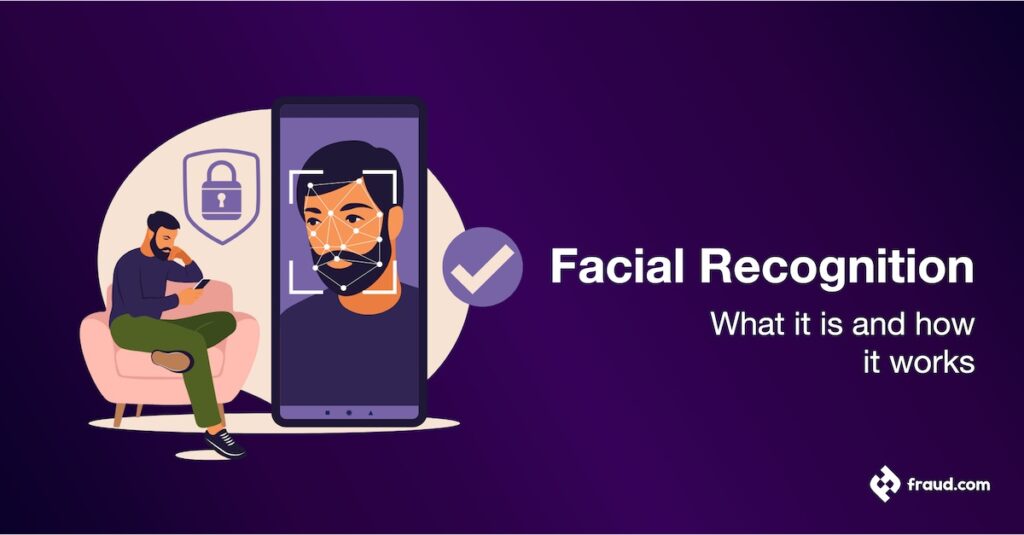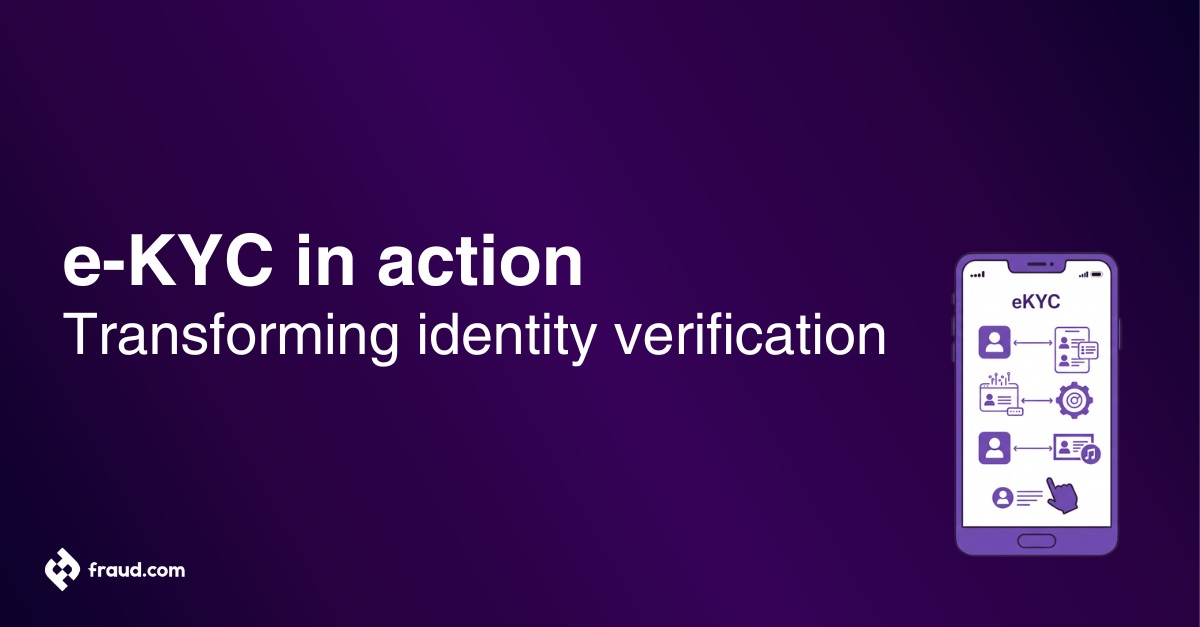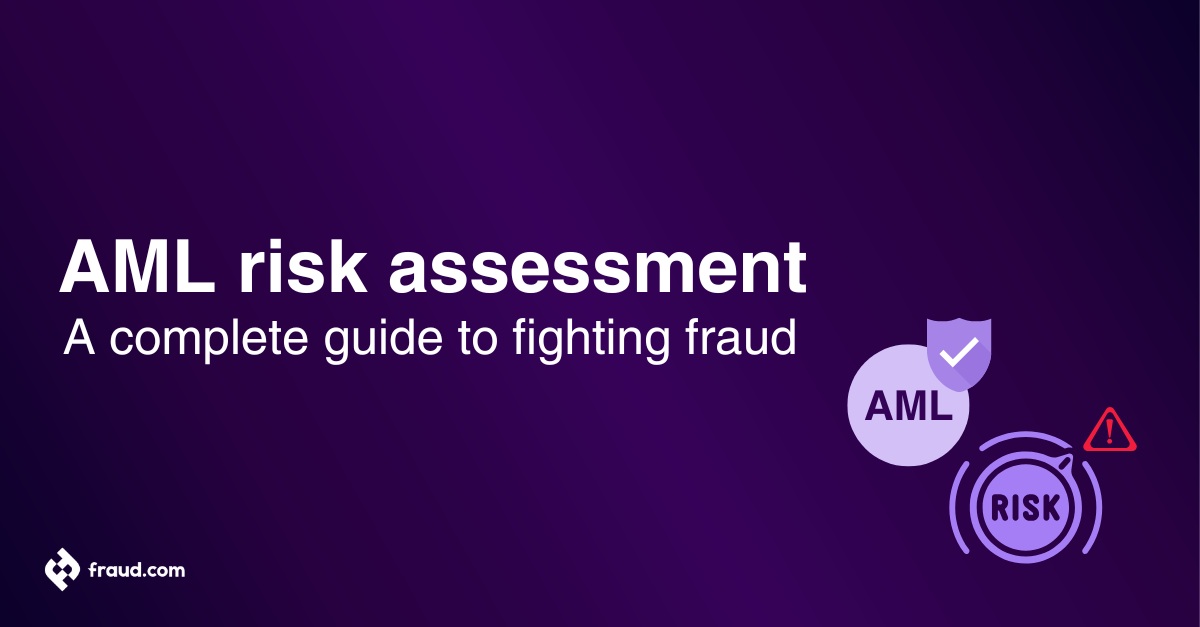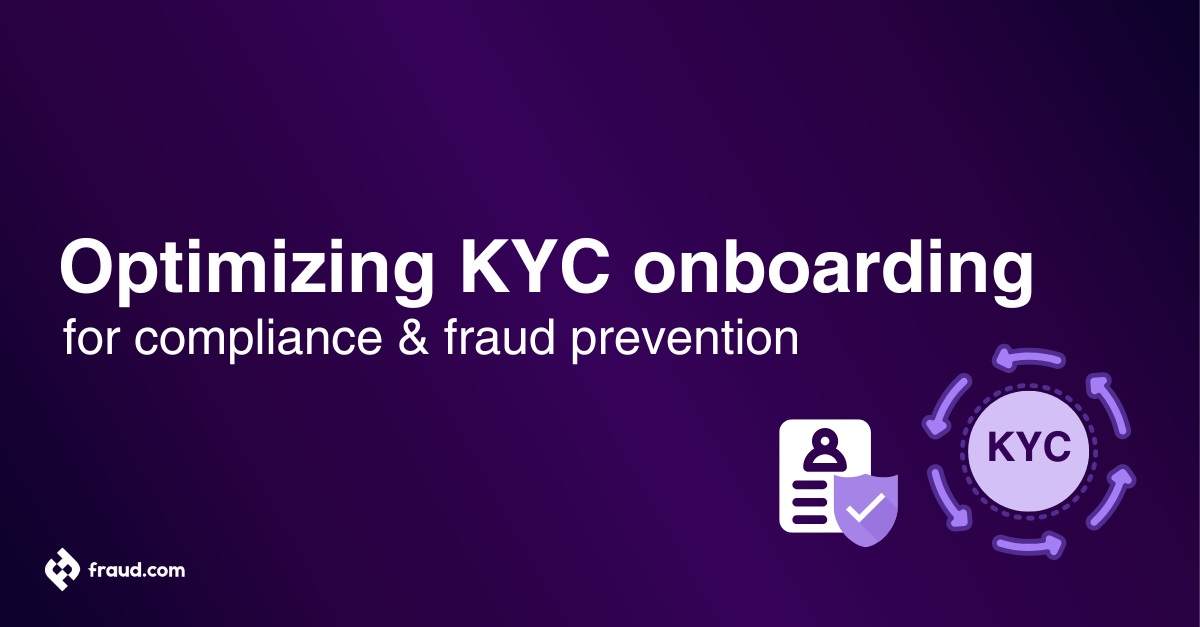In the world we live in today, where technology is continuously advancing and becoming more sophisticated, the emergence of face detection and facial recognition technology is undoubtedly creating waves. Much like the progression from dial-up internet to high-speed broadband, or from black and white television to high-definition colour; face recognition technology has emerged from the realm of science fiction into our everyday lives.
The essence of this technology lies in its ability to identify or verify the identity of an individual just by their face. It’s an impressive feat of artificial intelligence that has started to find its way into a myriad of sectors and applications, notably among them are banks and financial institutions, law enforcement agencies and social media platforms.
Table of Contents
ToggleWhat is facial recognition?
Facial recognition is the cutting-edge technology used to identify people in photos, videos, or in real time. With roots tracing back to the mid-20th century, facial recognition has developed to be a key tool in the arsenal of fraud prevention methods for many industries worldwide.
The core function of facial recognition is to digitally map a person’s face, creating a unique identifier or “face ID”. Facial recognition technology explores various geometrical characteristics of the face. Factors such as the distance between the eyes, the width of the nose, the depth of the eye sockets, the shape of the cheekbones, and the length of the jawline are taken into account.
This technology can compare the captured facial image to the information stored in a database. Despite its complex nature, its effectiveness and efficiency have continually improved due to advancements in machine learning and artificial intelligence, making facial recognition a mainstay for many organisations among many industries.
How does facial recognition work?
Facial recognition work is predominantly hinged on artificial intelligence (AI) and vital components like machine learning and deep learning. The system follows an intricate process of face detection and identification, wherein the software scans, maps, and analyses facial features from a facial image to form a unique face ID. This process includes critical steps:
- Adopting sophisticated AI algorithms, the technology efficiently captures a nuanced facial image, either from a static photo, live-streamed footage, animations, or real-time images/videos.
- The advanced software quickly isolates and identifies the face within the image. The complex AI technology adds a layer of comprehensive processing, proficiently setting the detected face for further refined analysis.
- During the standardisation phase, the image undergoes dedicated adjustments aimed at normalising the size, angle, and pose. The system meticulously weeds out any extraneous elements and accentuates the necessary facial features, ensuring the features receive precision-based focus.
- The highly effective software then embarks on a detailed identification process, deep-diving into unique facial landmarks, including the intricate architectural size and shape of conspicuous attributes such as the eyes, nose, cheekbones, and jawline.
- After the successful extraction of these minutiae, a comparative analysis ensues, pitting these unique features against a vast sea of facial data housed in its extensive database. The aim is a meticulous hunt for a potential match that mirrors these marked attributes.
- Upon completion, the system meticulously presents the results accompanied by a corresponding confidence score. This score serves as an adept indicator, precise gauging of the match’s dependability and the potential margin of error, thereby emphasising the technology’s impressive reliability.
The use of machine learning enhances the accuracy of the facial recognition system’s capability to detect and process facial features, making it an integral cog in the wheel of this technology. By constantly ‘learning’ and ‘updating’ its database with new faces and their variations, it strengthens its matching accuracy, even under varying conditions like changes in age, facial hair, or glasses. Through this comprehensive and incessant learning, AI-powered facial recognition systems offer an unrivalled level of security and accuracy in real-time.
Facial recognition system function
Facial recognition systems operate through a series of complex functions designed to accurately identify and authenticate individuals based on their facial features:
- Face detection: Locate and detect human faces within visual data.
- Feature extraction: Extract distinctive facial features from detected faces.
- Face matching: Compare extracted facial features against a database of known faces.
- Confidence scoring: Assign a confidence score indicating the system’s certainty in the match.
- Decision making: Determine match validity based on confidence score and thresholds.
- Feedback and adaptation: Incorporate user feedback and system errors to refine algorithms.
- Response generation: Generate appropriate responses based on successful identification/authentication.
In summary, facial recognition systems perform a series of sophisticated functions, including face detection, feature extraction, matching, confidence scoring, decision-making, feedback integration, and response generation, to accurately identify and authenticate individuals in various settings and applications.
Facial recognition system benefits
In the landscape of modern security and authentication solutions, facial recognition systems stands out as a powerful tool. Its capabilities extend far beyond traditional methods, offering multiple benefits for businesses and individuals alike. Let’s delve into the advantages that facial recognition systems bring to the forefront, particularly in the aspect of anti-fraud, identity verification, and authentication:
- Enhanced security: Facial recognition bolsters security measures by uniquely identifying individuals based on their facial features, thereby reducing the risk of unauthorized access or fraudulent activities.
- Efficient Identity Verification: Leveraging facial recognition expedites the process of verifying identities, facilitating smoother onboarding procedures for businesses while ensuring compliance with regulatory requirements.
- Reduced fraudulent activities: Implementing facial recognition systems helps organizations effectively combat identity theft, account takeover, and fraudulent transactions, safeguarding both assets and user trust.
- Improved customer experience: The seamless integration of facial recognition enhances user experience by eliminating cumbersome authentication processes, fostering convenience, and instilling confidence among customers.
- Scalability and adaptability: With its scalable architecture and adaptable functionalities, facial recognition systems cater to the diverse needs of businesses across industries, ensuring sustained effectiveness in fraud prevention.
- Compliance and risk mitigation: Facial recognition solutions bolster compliance efforts in certain identity verification regulations and mitigate risks, aiding businesses in adhering to regulatory standards and safeguarding against legal liabilities associated with fraudulent activities.
- Data-driven insights: Facial recognition technology offers valuable insights through data analytics, empowering organizations with informed decision-making capabilities and enabling the optimization of fraud prevention strategies based on comprehensive user behavior analysis.
In conclusion, the integration of facial recognition technology within identity verification and authentication solutions represents a significant advancement, promising heightened security, streamlined processes, and enhanced user trust in digital interactions.
How facial recognition is used
Facial recognition technology finds diverse applications across various sectors, leveraging its capabilities to address a multitude of challenges and streamline operations:
- Access control and security: Facial recognition is widely employed in access control systems, allowing authorized personnel seamless entry into secure facilities while preventing unauthorized access by identifying individuals based on their facial features.
- Identity verification and authentication : Facial recognition serves as a tool for verifying identities and authenticating users during processes such as unlocking their mobile phone devices, account creation, login processes, and high-value transactions, enhancing security and mitigating fraud risks.
- Retail personalization: Retailers use facial recognition to personalize customer experiences by analyzing facial expressions and demographic data, enabling targeted advertising, product recommendations, and tailored services based on individual preferences.
- Surveillance and public safety: Law enforcement agencies use facial recognition to enhance public safety through video surveillance systems, enabling the rapid identification and apprehension of suspects in criminal investigations, missing person cases, and crowd monitoring scenarios.
- Attendance tracking and time management: In educational institutions and workplaces, facial recognition systems automate attendance tracking and time management processes, eliminating manual data entry errors and ensuring accurate records of attendance and work hours.
- Banking security: Banks employ facial recognition technology for enhanced security measures, enabling secure access to accounts, facilitating biometric authentication for transactions, and detecting fraudulent activities, thereby safeguarding customers’ financial assets.
- Healthcare and medical diagnosis: Facial recognition technology aids healthcare professionals in patient identification, medical record management, and diagnostic assistance, facilitating efficient delivery of healthcare services and improving patient outcomes.
- Smart mome and Internet of Things (IoT): In the realm of smart homes and IoT devices, facial recognition enables personalized user experiences, allowing homeowners to control appliances, access security features, and customize settings based on facial recognition-enabled authentication.
- Emotion analysis and mood detection: Researchers and psychologists adopt facial recognition algorithms to analyze facial expressions and detect emotional cues, aiding in emotion recognition, mood tracking, and mental health assessment in clinical and research settings.
- Border control and immigration: Immigration authorities deploy facial recognition technology at border checkpoints and airports to enhance border security, verify travelers’ identities, and expedite immigration processes, facilitating smoother travel experiences while strengthening national security measures.
In summary, facial recognition technology serves as a versatile tool with far-reaching applications, revolutionizing industries, enhancing security measures, and improving efficiency across various domains. Its continued evolution promises to reshape the way we interact with technology and navigate the world around us.
Facial recognition security: How to protect yourself
In today’s digital landscape, where facial recognition technology is becoming increasingly prevalent, safeguarding personal privacy and security is paramount. Here are essential steps individuals can take to protect themselves:
1. Optimize privacy settings: Regularly review and adjust privacy settings on devices, apps, and social media platforms to limit the sharing and collection of facial data.
2. Be mindful of sharing: Exercise caution when sharing facial images online, minimizing exposure to potential misuse or unauthorized access.
3. Strengthen account security: Enable robust security measures like Two-Factor Authentication (2FA) to bolster account protection beyond facial recognition.
4. Stay updated: Keep devices and software updated with the latest security patches to mitigate vulnerabilities exploited by malicious actors.
5. Use strong passwords: Create unique, strong passwords for online accounts to enhance security against unauthorized access.
6. Exercise caution online: Be wary of unknown apps and links, as they may pose security risks such as malware or phishing attempts.
7. Educate yourself: Stay informed about privacy risks associated with facial recognition technology to make informed decisions about its use.
8. Advocate for transparency: Support efforts advocating for transparency and accountability in the deployment and regulation of facial recognition technology.
9. Know your rights: Familiarize yourself with privacy laws and regulations to understand your rights regarding facial recognition data.
10. Seek legal advice: Consider seeking legal advice or support from organizations specializing in digital privacy rights if you suspect misuse of facial recognition data.
By proactively implementing these measures and staying informed about emerging threats, individuals can better protect themselves against potential privacy infringements associated with facial recognition technology. Remember, staying vigilant and informed is key to maintaining personal privacy and security in an evolving digital landscape.
Advantages and disadvantages of face recognition
Face recognition technology presents a suite of advantages and potential drawbacks that merit careful consideration:
Advantages:
- Enhanced security: Face recognition bolsters security measures by uniquely identifying individuals based on their facial features, reducing the risk of unauthorized access or fraudulent activities.
- Improved user experience: The seamless integration of facial recognition enhances user experience by eliminating cumbersome authentication processes, fostering convenience, and instilling confidence among customers.
- Efficient identity verification: Facial recognition expedites the process of verifying identities, facilitating smoother onboarding procedures for businesses while ensuring compliance with regulatory requirements.
- Scalability and adaptability: With its scalable architecture and adaptable functionalities, facial recognition systems cater to the diverse needs of businesses across industries, ensuring sustained effectiveness in fraud prevention.
- Real-time monitoring and alerts: Facial recognition technology enables real-time monitoring of user activities, allowing swift detection and response to suspicious behaviors, thereby preempting potential fraudulent incidents.
Disadvantages:
- Privacy concerns: Facial recognition raises privacy concerns as it involves the collection and processing of sensitive biometric data, potentially infringing on individuals’ privacy rights and raising ethical considerations.
- Security vulnerabilities: Facial recognition systems may be susceptible to security vulnerabilities, including spoofing attacks using manipulated images or videos, compromising the integrity of the authentication process.
- Integration complexity: Integrating facial recognition systems into existing infrastructure may pose technical challenges and require significant investment in resources and expertise for deployment and maintenance.
- Accuracy and bias: While advancements in facial recognition technology have improved accuracy, challenges persist, including susceptibility to bias based on factors such as race, gender, and age, leading to potential misidentifications and false positives.
- Legal and regulatory challenges: The deployment of facial recognition technology is subject to legal and regulatory frameworks governing the collection, storage, and use of biometric data, posing compliance challenges for businesses and organizations.
In summary, while facial recognition technology offers compelling advantages in enhancing security, efficiency, and user experience in anti-fraud and identity verification solutions, careful consideration of its potential drawbacks, including privacy concerns, accuracy issues, and regulatory challenges, is essential for responsible and effective implementation.
Is facial recognition accurate?
Before delving into the specifics of facial recognition accuracy, it’s crucial to understand the underlying factors that influence its reliability. Facial recognition technology uses algorithms to analyze and match facial features, but its accuracy can vary depending on several variables, including:
- Quality of input data: The accuracy of facial recognition heavily relies on the quality of input data, including the resolution and clarity of images or videos used for analysis.
- Diversity of dataset: The diversity of the dataset used to train facial recognition algorithms impacts their ability to accurately identify faces across different demographics, including age, gender, and ethnicity.
- Environmental factors: Environmental factors such as lighting conditions, angle of capture, and occlusions (e.g., accessories or facial hair) can affect the accuracy of facial recognition systems.
- Algorithm sophistication: The sophistication of the facial recognition algorithm plays a significant role in determining its accuracy, with more advanced algorithms typically yielding higher accuracy rates.
- Evaluation methodology: The methodology used to evaluate facial recognition accuracy, including benchmarking against standardized datasets and real-world testing scenarios, influences the reported accuracy rates.
Considering these factors, it’s essential to critically evaluate the accuracy claims of facial recognition technology and recognize its limitations in real-world applications. The following section explores in detail the metrics used to assess the accuracy of facial recognition systems.
How accurate is facial recognition?
Facial recognition technology has garnered significant attention for its potential to revolutionize security and authentication processes. Understanding its accuracy is crucial in assessing its reliability and effectiveness. Here’s a breakdown of key considerations:
- Precision and matching accuracy: Modern facial recognition systems boast impressive precision rates, often achieving high levels of accuracy in matching facial features to stored templates. State-of-the-art algorithms continually refine matching capabilities, minimizing false positives and negatives.
- Biometric variability: Despite advancements, facial recognition accuracy can be influenced by various factors, including image quality, lighting conditions, facial expressions, occlusions (such as glasses or facial hair), and pose variations. While robust algorithms mitigate these challenges to a great extent, real-world scenarios may still pose occasional difficulties.
- Ethnic and demographic bias: Concerns have been raised regarding the potential for bias in facial recognition algorithms, particularly with respect to ethnic and demographic groups. Biased training data or algorithmic biases can lead to disparities in recognition accuracy across different populations, highlighting the importance of diversity and fairness in dataset curation and algorithm development.
- Continuous improvement: Facial recognition technology undergoes continual refinement and improvement through advancements in machine learning, neural networks, and data augmentation techniques. Iterative training and validation processes help enhance accuracy over time, addressing previously encountered challenges and adapting to evolving use cases.
- Performance metrics and evaluation: Accuracy assessments of facial recognition systems typically rely on performance metrics such as true positive rate (TPR), false positive rate (FPR), and receiver operating characteristic (ROC) curves. Rigorous testing methodologies, including benchmark datasets and standardized evaluation protocols, enable objective comparisons across different algorithms and implementations.
- Real-world deployment challenges: While testing can provide insights into facial recognition accuracy under controlled conditions, real-world deployment introduces additional complexities. Environmental factors, device-specific considerations, and user behavior patterns can impact system performance, necessitating ongoing monitoring and optimization.
- Transparency and accountability: Ensuring transparency and accountability in facial recognition deployment is essential for building trust and confidence among users and stakeholders. Clear documentation of system capabilities, limitations, and performance metrics fosters informed decision-making and facilitates responsible usage practices.
In summary, while facial recognition technology has demonstrated remarkable accuracy in many applications, ongoing efforts are needed to address challenges related to variability, bias, and real-world deployment complexities. By prioritizing fairness, robustness, and continuous improvement, facial recognition systems can fulfill their potential as valuable tools in various domains, including security, identity verification, and personalized user experiences.
Is facial recognition safe?
The safety implications of facial recognition technology are a topic of ongoing debate and scrutiny. While the technology offers various benefits, concerns regarding privacy, security, and potential misuse persist. Here are key considerations regarding the safety of facial recognition:
- Privacy issues: Facial recognition systems can capture and analyze individuals’ facial features, leading to concerns about data protection and potential misuse of biometric data.
- Security risks: Vulnerabilities in facial recognition systems may lead to data breaches and unauthorized access, compromising the confidentiality of sensitive information.
- Potential misuse: There’s a risk of facial recognition technology being misused for surveillance, tracking, and profiling purposes, raising civil liberties and human rights concerns.
- Bias and discrimination: Biased algorithms may result in inaccuracies or disparities in identification across different demographic groups, perpetuating social inequalities.
- Legal and ethical implications: Facial recognition deployment raises complex legal and ethical questions regarding consent, transparency, accountability, and individual rights.
- Public trust: Building public trust and acceptance requires transparency, accountability, and stakeholder engagement to address concerns related to privacy, security, and fairness.
- Technological limitations: Despite advancements, facial recognition technology still faces challenges in accuracy, especially in real-world scenarios, and addressing variability in facial features.
In conclusion, while facial recognition technology holds promise in various domains, ensuring its safety requires addressing privacy, security, ethical, and societal considerations. Effective regulation, transparent governance, and responsible deployment practices are essential for harnessing the benefits of facial recognition while mitigating risks and safeguarding individual rights and freedoms.
What is a confidence score in facial recognition?
A confidence score in facial recognition refers to a numerical value assigned to each facial recognition match, indicating the system’s level of certainty in its identification. This score represents the degree of confidence that the algorithm has in the accuracy of its match. Higher confidence scores indicate a stronger likelihood that the identified individual matches the reference image or template stored in the system’s database, while lower scores suggest a lower level of confidence and may warrant further verification or scrutiny.
Confidence scores play a crucial role in assessing the reliability of facial recognition matches and are often used in decision-making processes, such as granting access, authenticating identities, or triggering alerts for potential security threats. Understanding and interpreting confidence scores accurately are essential for effectively leveraging facial recognition technology while minimizing the risk of false positives or false negatives.
Confidence score threshold
In facial recognition systems, the confidence score threshold determines the minimum confidence level for accepting a match. For example, a 95% threshold means only matches with 95% or higher confidence are accepted. This enhances security but may reject legitimate matches. Conversely, a lower threshold like 80% increases match acceptance but raises the risk of false positives. Balancing security and usability is key, often requiring iterative adjustments.
Facial recognition examples
Facial recognition technology is increasingly integrated into various industries and applications, revolutionizing processes and enhancing security. Here are notable examples of its diverse usage:
- Apple face ID: Apple’s Face ID feature on iPhones utilizes facial recognition technology for secure authentication and unlocking of devices. It provides a convenient and intuitive way for users to access their smartphones and authenticate transactions securely.
- Facebook’s tag suggestions: Facebook employs facial recognition technology in its tag suggestions feature, automatically identifying and suggesting tags for individuals in uploaded photos. This streamlines the process of tagging friends and family in social media posts.
- Amazon rekognition: Amazon’s Rekognition service offers facial recognition capabilities for various applications, including security, identity verification, and analysis of customer demographics. It enables businesses to enhance security measures and personalize customer experiences.
- Microsoft azure face API: Microsoft’s Azure Face API provides facial recognition capabilities for applications such as identity verification, surveillance, and user authentication. It offers robust and scalable solutions for businesses across industries.
- Google photos: Google Photos utilizes facial recognition technology to organize and categorize users’ photo libraries automatically. It allows users to search for specific people or objects within their photos effortlessly.
- Samsung face recognition: Samsung incorporates facial recognition technology into its devices for user authentication and device unlocking. It offers an additional layer of security and convenience for Samsung smartphone users.
- IBM watson visual recognition: IBM Watson Visual Recognition offers facial recognition capabilities for various applications, including security, retail analytics, and healthcare. It enables businesses to leverage AI-powered insights for decision-making and innovation.
These examples showcase the widespread adoption of facial recognition technology by leading companies such as Apple, Facebook, Amazon, Microsoft, Google, Samsung, and IBM. It highlights the technology’s versatility and its potential to transform industries and improve user experiences.
Facial recognition in the anti-fraud industry
The fight against fraud has entered the 21st century on a strong foot, largely due to cutting-edge tools such as facial recognition technology. The applications of this advanced tool are numerous and revolutionary, offering an effective and fairly reliable means of identifying potential fraudsters by precisely analysing and comparing distinct facial features.
Investigation departments in both public and private sectors have leveraged these latest technological advancements to their advantage. By converting facial features from images into mathematical formulas and comparing these models to databases, possible matches can be achieved. This aspect has proven itself extremely beneficial in identifying suspects and criminals, which is a process that was immensely laborious and time-consuming in the past.
However, as with any technology, facial recognition isn’t flawless. Its reliance on algorithms and learning models opens up possibilities for false positives. This scenario can occur when the system erroneously matches the facial image of an innocent individual with that of a criminal in its database. The negative implications of these mistakes can be significant, leading to unwarranted suspicion, unnecessary investigations, and blemished reputations.
Nonetheless, technology is evolving rapidly, and recent advancements aim to minimise these errors. Enhanced machine learning and artificial intelligence algorithms are being applied to improve the accuracy of facial recognition systems. Furthermore, incorporating additional parameters such as age, and gender, and even identifying unique facial marks could aid in reducing the likelihood of false positives. In addition, human supervision combined with the system’s algorithmic analysis can provide a more comprehensive and reliable identification process.
Real-time facial recognition is another promising advancement in this field. Instead of just analysing pre-recorded or static images, this technology allows the identification of individuals in live video feeds. This development could lead to more proactive, rather than reactive, anti-fraud measures.
In conclusion, while opportunities for improvement certainly exist, the integration of facial recognition technology in the anti-fraud industry provides a robust tool in the ongoing battle against fraud. With ongoing advancements, closer collaboration between technology and human input, and rigorous procedures in place for the verification of results, the future of fraud prevention looks promising indeed.
Facial recognition in identity verification
Identity verification using facial recognition technology has become a prominent application in the anti-fraud industry. It serves as a fast and efficient method to confirm an individual’s identity in an unprecedented real-time fashion.
Facial recognition to identify users often involves two key steps. First, the facial recognition software captures a facial image, typically during an enrolment process. This image is then used to extract unique facial features to create a face ID. The second step occurs when biometric authentication is needed – another photo or video of the individual is taken and compared to the stored face ID.
Not only does this have wide-reaching applications across a variety of industries like finance, healthcare, and e-commerce but it’s also used by law enforcement agencies for confirming suspects’ identities. But one may need to deal with certain challenges like potential false positives due to varying facial expressions, changes in appearance over time or lighting conditions. However, thanks to the ongoing advancements in deep learning and artificial intelligence, these challenges are being tackled to further enhance the accuracy of the facial recognition system.
It’s worth noting that while this technology is powerful and promises streamlined solutions, it should be used responsibly respecting privacy and personal data protection laws.
In conclusion, facial recognition technology as an identity verification tool can play a transformative role in creating secure environments, combating identity fraud, and ensuring an all-around safer business environment.
Benefits of facial recognition
Facial recognition technology offers numerous advantages, especially in the field of identity verification and authentication processes. Some of these benefits include:
- Efficiency: The unrivalled efficiency of facial recognition systems is one of its strongest selling points for organisations across the globe. Unlike traditional methods that require manual checking and cross-referencing, this cutting-edge technology has automation at its heart. It offers quick and real-time results, capable of processing and verifying identities within mere seconds.
- Non-contact process: Being a non-contact and non-intrusive method, facial recognition technology provides a compelling advantage. It does not require the physical presence or interaction of the individual, allowing for remote verification. This characteristic provides a level of convenience that traditional methods of identity verification cannot match. Moreover, in the current climate of health concerns, a contactless process significantly promotes safety, decreasing exposure risks while still ensuring secure identity verification.
- High accuracy: The technological backbone of facial recognition, with advanced algorithms and deep learning techniques, imbues this system with high accuracy rates. The software is proficient in distinguishing facial features, enabling it to distinguish between individuals effectively and making false positives increasingly rare. This benefit ensures authenticity and prevents fraud, making facial recognition a reliable tool in the anti-fraud industry.
- Scalability: One of the standout advantages of facial recognition technology is its scalability. As the technology harnesses artificial intelligence, it can handle vast databases, scanning a large scale of numbers in a relatively short time. Whether you’re a small start-up or a large corporation, the technology is flexible and adaptable to suit your scale and needs, making it an efficient solution across various contexts.
- Integration: The seamless integration of facial recognition technology into existing systems and applications cannot be overlooked. The technology is designed to smoothly dovetail with traditional systems, ensuring efficient operation without requiring a substantial overhaul of the existing infrastructure. This means businesses can enjoy the benefits of advanced facial recognition while reducing downtimes and costs associated with significant system upgrades.
- Security: One of the pivotal advantages of facial recognition technology is its inherent security. It works on the unique characteristics of human facial features, which naturally vary from one individual to another. This distinctiveness makes it extremely difficult to falsify facial identity, providing a robust layer of security.
- 24/7 Operation: In addition to its other benefits, facial recognition technology is also characterised by its continuous operational capacity. Round-the-clock functionality offers constant vigilance, enhancing the safety and security of various systems. Regardless of the hour, facial recognition stands as an unwavering line of defence against fraud and security breaches.
- Enhanced customer experience: Our digital era calls for seamless, swift systems and services, and facial recognition technology delivers on that front. The technology can significantly speed up client onboarding processes, with a shorter verification procedure that reduces friction and improves the overall customer experience. This smooth experience can fortify customer loyalty and contribute positively to the business’s reputation.
- Cost-effective: As facial recognition technology matures, it’s becoming increasingly affordable and accessible to businesses of all sizes. The costs associated with implementing and maintaining such systems are decreasing, making it a financially viable choice for all. Its cost-effectiveness extends beyond the initial installation, as it may also contribute to reducing fraud-related losses. Therefore, implementing facial recognition technology can help save costs in the broader business context.
- Stronger identity verification processes: Facial recognition technology significantly strengthens identity verification processes by adding an unforgeable layer of security. It enhances the reliability of the verification process by reducing the risk of human error and fraud. This increased integrity and assurance in the process are essential in sectors where stringent identity checks are a prerequisite.
In conclusion, leveraging facial recognition technology can breed numerous benefits, especially in enhancing identity verification and authentication systems across multiple sectors. Combining this technology with other security measures can significantly bolster defence against identity fraud.
Facial recognition FAQ
| Facial Recognition FAQ |
|---|
| Question | Answer |
|---|---|
| How does facial recognition work? | Facial recognition systems analyze facial features to identify and authenticate individuals. |
| What are the main applications of facial recognition? | Facial recognition is used for security, access control, identity verification, marketing, and more. |
| Is facial recognition accurate? | Facial recognition accuracy varies based on factors like data quality, algorithm sophistication, and environmental conditions. |
| What is a confidence score in facial recognition? | A confidence score indicates the system’s level of certainty in a match, with higher scores indicating greater confidence. |
| What is a confidence score threshold? | The confidence score threshold is a predetermined value used to determine the minimum confidence required for a match to be accepted. |
| How is facial recognition used in smartphones? | Companies like Apple use facial recognition for device unlocking and authentication in smartphones like the iPhone. |
| Are there privacy concerns with facial recognition? | Yes, privacy concerns include the collection and storage of biometric data and potential misuse for surveillance or tracking. |
| What measures can be taken to protect privacy with facial recognition? | Privacy measures include reviewing and adjusting privacy settings, limiting data sharing, and advocating for transparency and accountability. |
| What are some examples of facial recognition technology? | Examples include Apple’s Face ID, security systems in airports, identity verification in banking, and personalized marketing in retail. |
| What functions do facial recognition systems perform? | Facial recognition systems detect faces, extract features, match against databases, assign confidence scores, make decisions, and generate responses. |
| How can I learn more about facial recognition technology? | You can research online, read articles, attend seminars, and consult experts in the field of facial recognition technology. |
| Is facial recognition regulated by laws? | Some jurisdictions have regulations governing facial recognition technology, but regulation varies globally. |
In this table, common questions about facial recognition are presented along with concise answers for easy reference.
Facial recognition by Udentify
Udentify offers an all-encompassing solution for businesses striving to effectively and securely identify and foster trust with their online customers. The application of Udentify’s facial recognition technology is expansive, encompassing several crucial areas.
Onboarding and user onboarding: Udentify uses AI-powered facial verification and passive liveness detection to swiftly match the live customer to their valid ID documents. The focus is on creating a frictionless and natural experience for customers while fast-tracking the onboarding process for your business.
Age verification: Regulations about age are complex, subject to fluctuation, and require strict adherence. Udentify validates customers’ ages in less than 13 seconds by extracting their date of birth from the chip in a government-issued ID document, ensuring regulatory compliance.
Passwordless authentication: Udentify offers true passwordless Multi-Factor Authentication (MFA) via facial and voice verification coupled with passive liveness detection. This high-performance solution answers the vital question – “Is this the correct, present person?”
KBA replacement: Udentify’s solution to replace Knowledge-Based Authentication (KBA) is its AI-powered facial verification technology. This echoes the importance of not simply advancing every user, but doing so swiftly and efficiently while barring dishonest individuals.
KYC & AML Compliance: With AML (Anti-Money Laundering) requirements becoming more stringent, Udentify ensures effortless KYC (Know Your Customer) and Customer Due Diligence (CDD) identity verification.
Strong Customer Authentication (SCA): Udentify’s facial recognition enables an automated, easily usable strong customer authentication process that requires less than a second, thereby enhancing security and limiting fraud.
Fraud prevention: Udentify actively works to hinder fraudsters and scams using face and voice biometrics along with passive liveness detection. Key security layers to prevent identity fraud include verifying ID documents, preventing man-in-the-middle attacks, AI face and voice verification, and passive face and voice liveness detection.
Using Udentify’s AI-enabled facial recognition technology enhances security, prevents fraud, streamlines operations, and ensures compliance. This contributes to a safer and more efficient business environment.
Facial recognition technology revolutionizes identity verification and authentication processes globally. As we embrace the digital era, secure and efficient identification methods become essential. The fusion of facial recognition and artificial intelligence provides reassurance to customers and anti-fraud decision-makers.
Udentify leads with innovative solutions for onboarding, age verification, authentication, and compliance. Their comprehensive system employs facial and voice biometrics with passive liveness detection to swiftly verify customers and ensure transaction security.
Adopting facial recognition technology is imperative for organizations to maintain integrity and user trust as technology evolves.
Facial recognition technology offers high efficiency, non-contact convenience, accuracy, and scalability, establishing secure environments and enhancing customer experiences. Embracing this technology champions a safer, fraud-free world.









